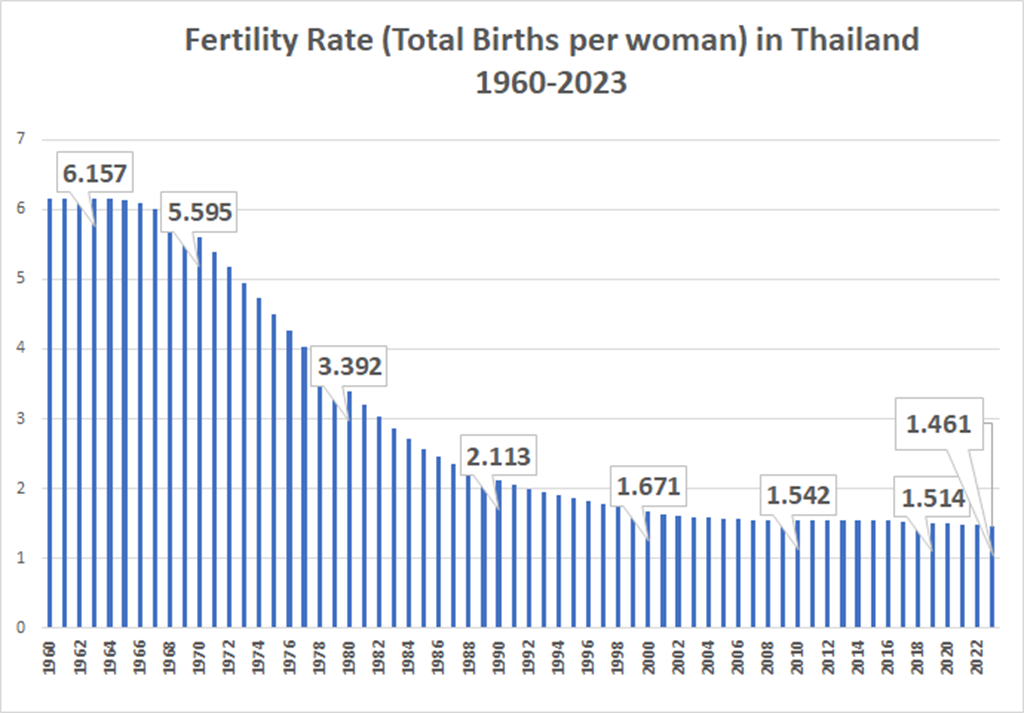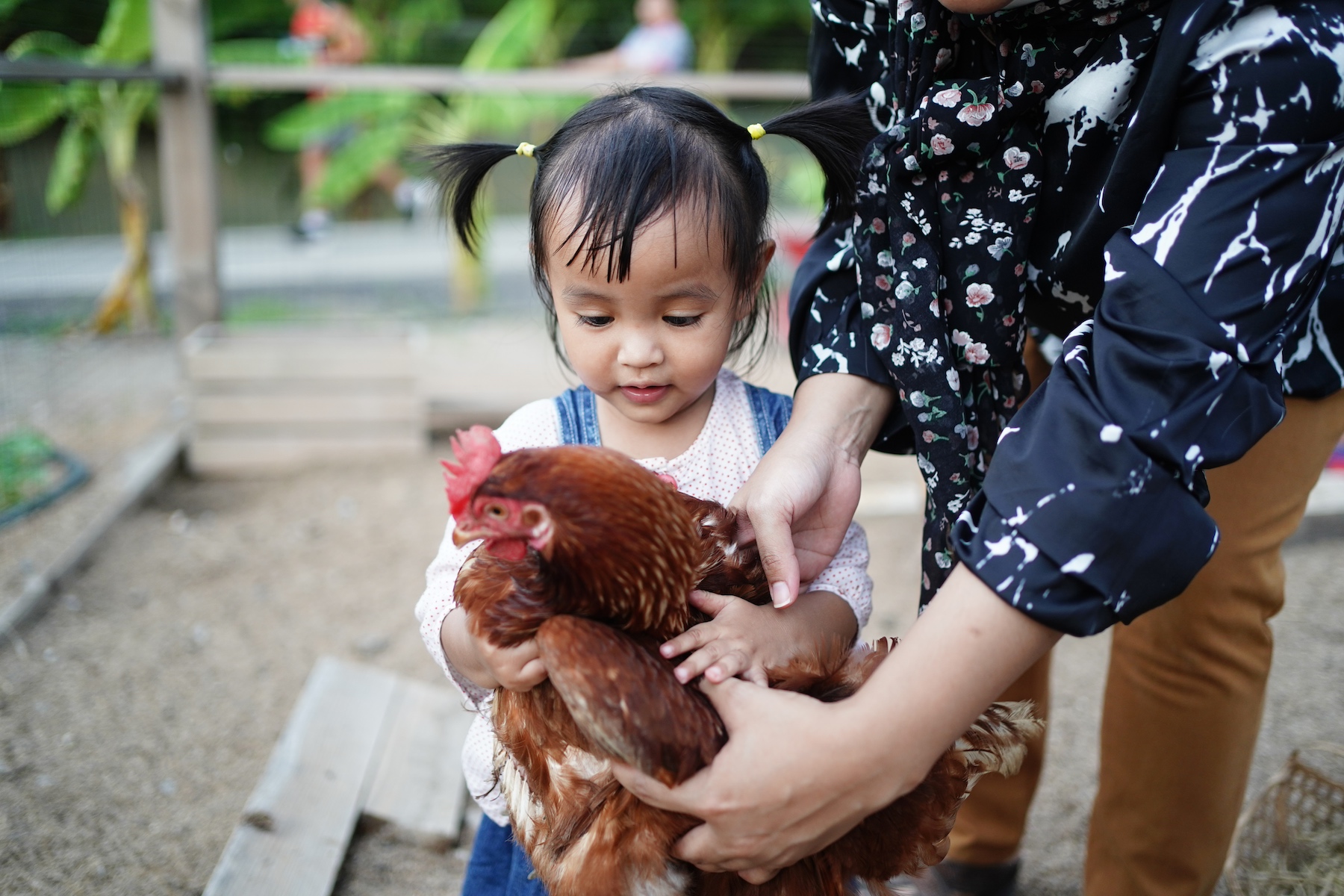After Singapore, Thailand has the second-lowest fertility rate in Southeast Asia, making it one of the fastest-ageing nations globally. The challenge is that Thailand is ageing before achieving wealth.
The government is working to boost its birth rate by encouraging families to have more children. Initiatives include offering childcare services, expanding fertility clinics, and using influencers to promote the benefits of family life.
The drop in fertility has been ongoing for years, as many young couples choose to have fewer or no children. They see raising kids as an overwhelming responsibility.
Some couples prefer freedom and independence, like travelling or switching careers, which they believe children could limit. Others hesitate due to concerns about poor social conditions, environmental issues, or unstable politics.

Having Children for the Nation
In 2024, Thailand’s population decreased by 100,000, reaching 65.95 million. This marked a shift as annual births fell below 500,000 for the first time since 1949, despite efforts like the “Having Children for the Nation” campaign.
Data from the Department of Provincial Administration on January 8, 2025, shows Thailand’s population at 65,951,210. This includes 64,953,661 Thai nationals and 997,549 non-Thai residents. Bangkok remains the largest city, with 5,455,020 residents.
In 2024, the country had 462,240 births compared to 571,646 deaths, continuing a four-year trend of more deaths than births. Marriage records logged 263,087 new unions, but 147,621 divorces happened in the same year.
Associate Professor Dr. Chalermpol Chamchan from Mahidol University’s Institute for Population and Social Research highlighted the crisis during a January 15 press conference. “Thailand is the only Southeast Asian nation classified by the UN among countries with declining birth rates, a group usually consisting of wealthy, developed countries,” he said.
Thailand’s total fertility rate (TFR) is now 1.0, even lower than Japan’s 1.2, placing it in the same category as South Korea and Singapore. Projections suggest the population could drop to 40 million within 50 years, losing 25 million people—around one million every two years.

Thailand’s facing challenges
This decline will likely shrink the workforce from 37.2 million to 22.8 million over the next 50 years. A recent survey of over 1,000 people aged 28 and older found that 71% consider the low birth rate a national crisis, but only 35.8% of those able to have children plan to do so.
Dr Chamchan noted that about 30% of respondents might reconsider having kids with the right support. He added that well-targeted programs could raise the percentage of those planning for children to over 60%.
While Thailand faces challenges similar to those of Japan or Singapore, its position as an emerging economy dependent on affordable labour and a growing middle class makes the situation more severe.
“The data shows a population crisis and a shift in attitudes toward having children,” said Teera Sindecharak, a demography expert at Thammasat University.
Senior health official Suwannachai Wattanayingcharoenchai told Reuters the government is stepping in. “We’re trying to slow the birth decline and reverse it by encouraging families to start sooner,” he said. Policies will aim to provide full state support for newborns.
Efforts include opening fertility clinics across all 76 provinces and using influencers to spread the message, officials said.
These measures, however, may be too late for people like 44-year-old Chinthathip Nantavong, who decided with her partner of 14 years not to have kids. “Raising a child is expensive. Kindergarten alone costs 50,000 to 60,000 baht ($1,520–$1,850) per semester, and the expenses only grow,” she explained, adding that other countries offer better care systems and benefits.
While low fertility rates are a regional challenge, Thailand has fewer resources than wealthier nations that rely on migrant workers to sustain their economies. Experts say it’s tough to reverse once social norms and financial pressures discourage people from having children.
Thailand is on track to become a “super-aged society,” with over 20% of the population older than 60. Currently, about 18% of Thais are in this age group.
Related News:
Thailand Grappling With a Child Obesity Epidemic

Geoff Thomas is an award winning journalist known for his sharp insights and no-nonsense reporting style. Over the years he has worked for Reuters and the Canadian Press covering everything from political scandals to human interest stories. He brings a clear and direct approach to his work.














